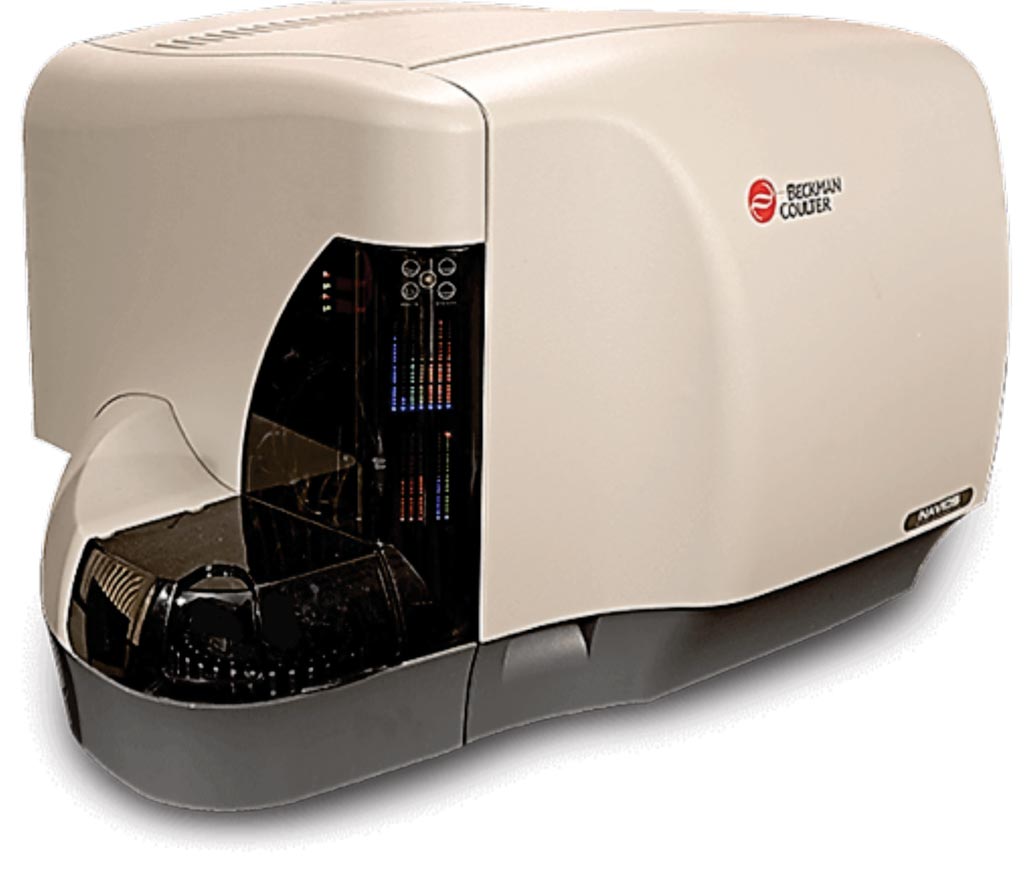Flow Cytometry Technique Assessed for Signaling Pathways
By LabMedica International staff writers
Posted on 24 Apr 2018
Platelet aggregation is a key parameter in arterial thrombosis, leading to myocardial infarction or ischemic stroke. Platelets have several receptors sensitive to different stimuli and drugs that modulate aggregation with potential critical clinico-pathological significance.Posted on 24 Apr 2018
Platelet intracellular signaling is essential for platelet function but difficult to study because of the small size and the need for delicate manipulation of platelets and because the reference techniques require large cell volumes and sample preparation. Flow cytometry is often used in routine clinical laboratories.

Image: The Navios clinical flow cytometer (Photo courtesy of Beckman Coulter).
A team of scientists collaborating with CHU Saint-Etienne, Hôpital Nord (Saint-Etienne, France) assessed degree of platelet vasodilator-stimulated phosphoprotein (VASP) phosphorylation on patients hospitalized for a non-cardio-embolic ischemic stroke, included in an observational study. The patients, 12 men, seven women with a mean age of 72 years, were enrolled in the study between November 2014 and September 2015, and were treated orally with a regular daily dose of 75 mg of clopidogrel for at least five days to be at steady state, before blood was drawn.
The VASP assay was performed using the PLT VASP/P2Y12 kit. In addition, the Platelet PerFix flow cytometry method was developed from the PerFix EXPOSE kit provided for leukocytes. The team adapted the manufacturer's instruction for this kit. The fixation, permeabilization, staining and washing reagents of the kit were used. Each step was performed at room temperature. Platelets were analyzed on a Navios cytometer using Navios software (Beckman-Coulter) within one hour after the preparation was completed. Maximum platelet aggregation induced by adenosine diphosphate (ADP) was measured by Light Transmittance Aggregometry or LTA.
The investigators found poor agreement between prevention by adenosine diphosphate (ADP) of PGE1-induced cAMP-mediated VASP phosphorylation and ADP induced aggregation assessed by Light Transmittance Aggregometry. They did find a significant correlation between the PLT VASP/P2Y12 kit and the PerFix EXPOSE kit. The PerFix EXPOSE kit may also be helpful to monitor adverse effects of second-generation tyrosine kinase inhibitors on platelets as this new method can detect low responders to clopidogrel. The study was published originally on-line on February 16, 2018, in the journal Practical Laboratory Medicine.
Related Links:
CHU Saint-Etienne













